The Insider: Shipshape Kitchen in Brooklyn Heights
The Insider, Brownstoner’s weekly coverage of interior design and renovation in the borough of Brooklyn, is produced and written by journalist/blogger Cara Greenberg. Find it here Thursdays at 11:30. “It started with the stove,” says North Fork, L.I.-based designer Kate Altman, who recently transformed an “impossibly bad” ’70s galley kitchen in a brownstone floor-through for…

The Insider, Brownstoner’s weekly coverage of interior design and renovation in the borough of Brooklyn, is produced and written by journalist/blogger Cara Greenberg. Find it here Thursdays at 11:30.
“It started with the stove,” says North Fork, L.I.-based designer Kate Altman, who recently transformed an “impossibly bad” ’70s galley kitchen in a brownstone floor-through for a professional couple and their 11-year-old daughter. It’s now a warm, appealing, functional space with a couple of showstopping features: the lipstick-red Italian range and a custom porcelain backsplash inspired by antique Chinese patterns but whimsically including the Brooklyn Bridge.
The old kitchen was so narrow the fridge didn’t fully open; the work counter was 12″ deep. Altman bumped out a wall to enlarge the room, stealing a few feet from the adjacent dining area. Now there are wraparound CaesarStone counters and custom-built, floor-to-ceiling cabinets.”We quadrupled the storage,” says Altman. “Every square inch is used. It’s tight as a ship.” Scott Solfrian, an architect and owner of BLDG, served as general contractor.
In the early ’90s, Altman owned a beloved Park Slope fabric store, Sewing Circle. Her newest venture is Altman’s North Fork Home in Cutchogue, L.I., a mini-emporium of all things sewing and needlework, along with a selection of decorative and useful household items and gifts.
Photo: BLDG
Details and more photos on the jump.
The homeowner saw the Italian Bertazzoni stove and just had to have it. The stools at the counter, used for homework as well as breakfast, are from Design Within Reach.
The countertop is CaesarStone, a man-made composite material; the color is ‘Blizzard.’
A stainless steel Jenn-Air fridge is tucked unobtrusively into the end wall of the room. The lower cabinets are bamboo, chosen because “it’s durable and has a modern feeling, but it’s warm,” Altman says. The uppers are painted wood.
With recessed lights on, the glass wall between kitchen and dining room, below, provides an ambient dinnertime glow.
The backsplash is made of large porcelain tiles which had to be “fired a million times,” Altman says of the labor-intensive process.
The design combines classical Chinese imagery with a well-known local landmark.
Above, the artist Ann Agee at work on a sketch for the backsplash.
The dining area doubles as a cozy library. “A room is always better with books,” Altman says. “They give a solid and safe feeling.” The ceiling fixture, made of shells, is from Altman’s new store.
Benjamin Moore’s Ravishing Red makes a strong statement in the small dining room. The curtains are hand-screened linen from Romo. The table is a one-off from a now-defunct shop, the chairs from Design Within Reach, the twig sconces from Vaughan.
The living room’s oak parquet floors are original to the apartment. In the kitchen and dining room, new floors were laid to match. More red in the living room includes a chair from Crate and Barrel (also the source of the bar cabinet in the background). The ‘Tulip’ artwork is acrylic on paper by Garance Wertmuller; all framing was done by Park Slope Gallery. The living room walls are Benjamin Moore’s Everlasting, “a warm comfortable gray that goes with everything,” Altman says.
The chimney breast is painted Benjamin Moore’s Muslin. The updated wing chair is from Mitchell Gold; the carpet is a souvenir of a trip to Egypt. The 1950s Danish coffee table came from Baxter & Liebchen, a DUMBO warehouse that specializes in mid-20th century Scandinavian furniture. The black credenza on the right, of unknown origins, came from a shop no longer in business.
Photos: Cara Greenberg
Next Insider: Thursday December 1. Happy Thanksgiving, all!

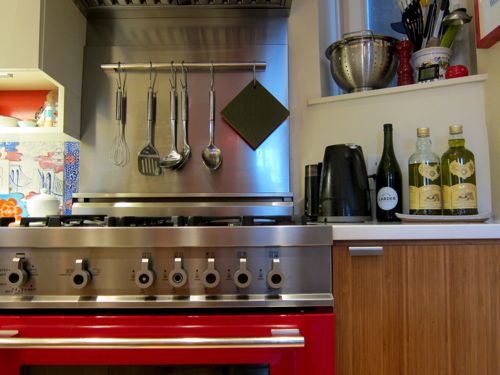
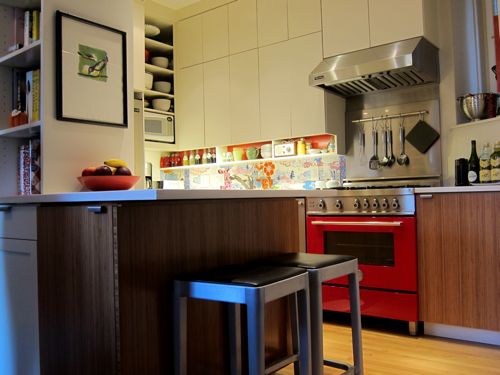
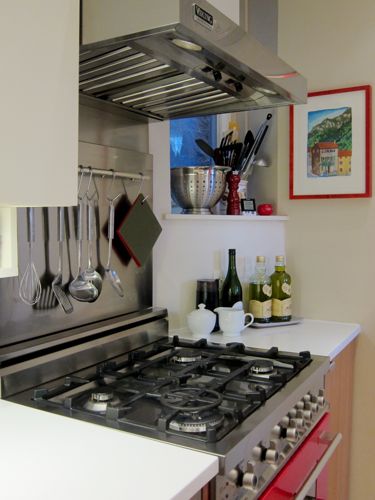

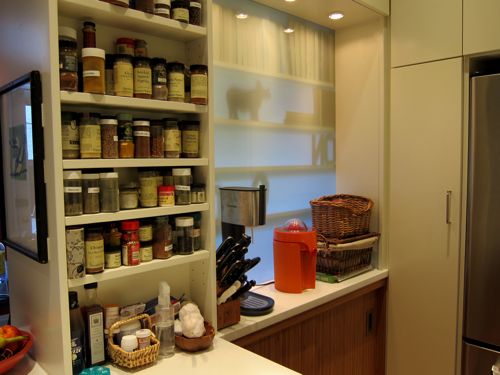
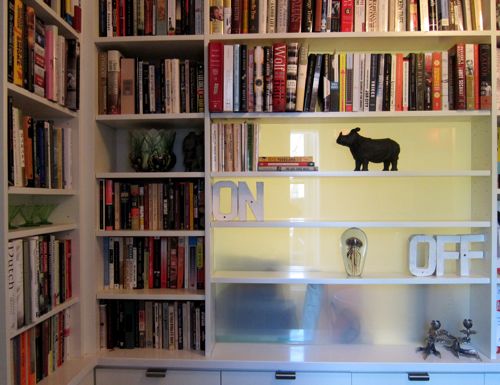
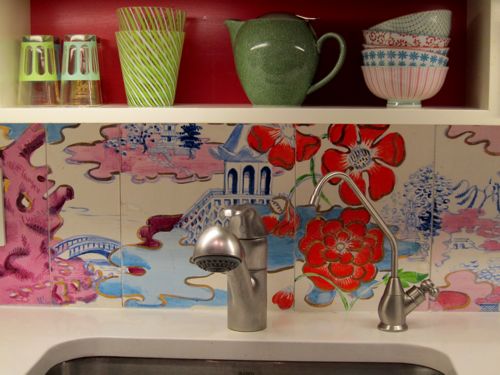


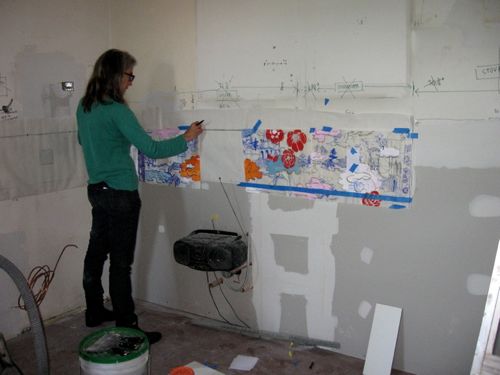
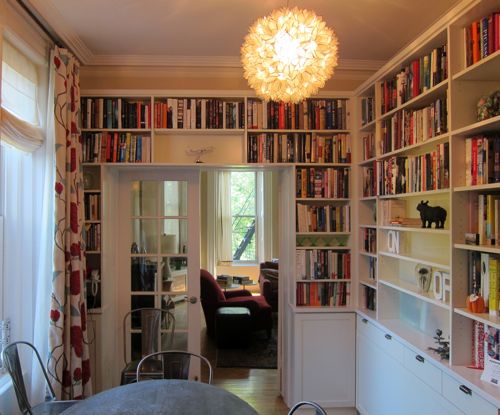
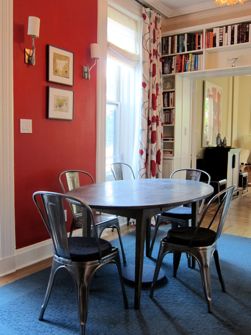
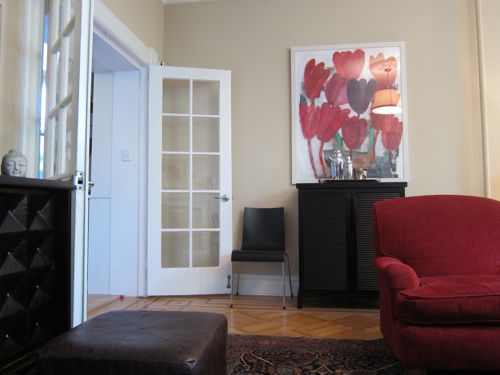


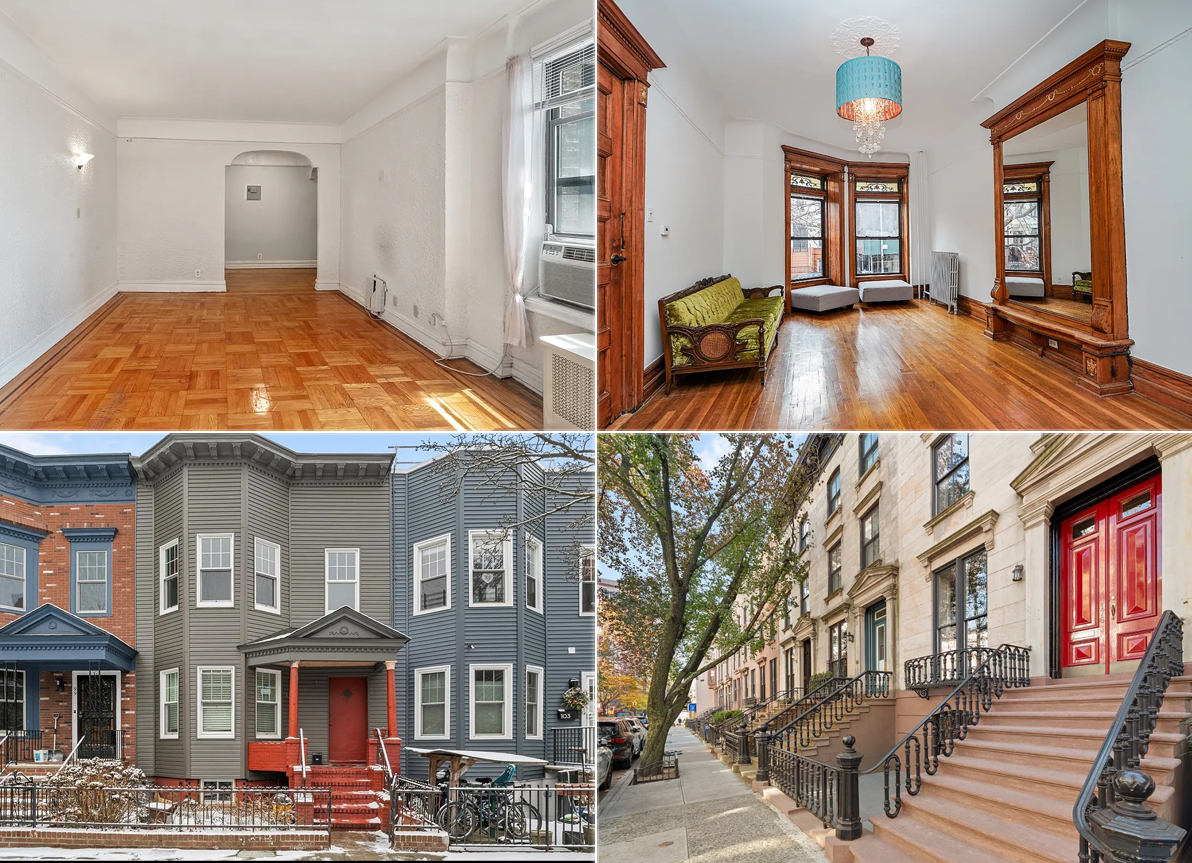
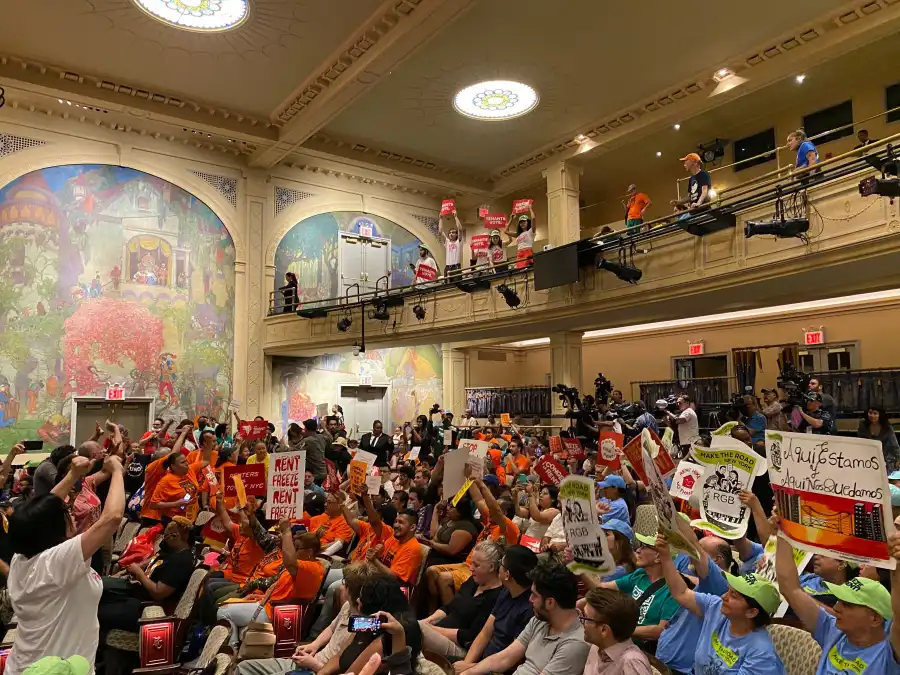
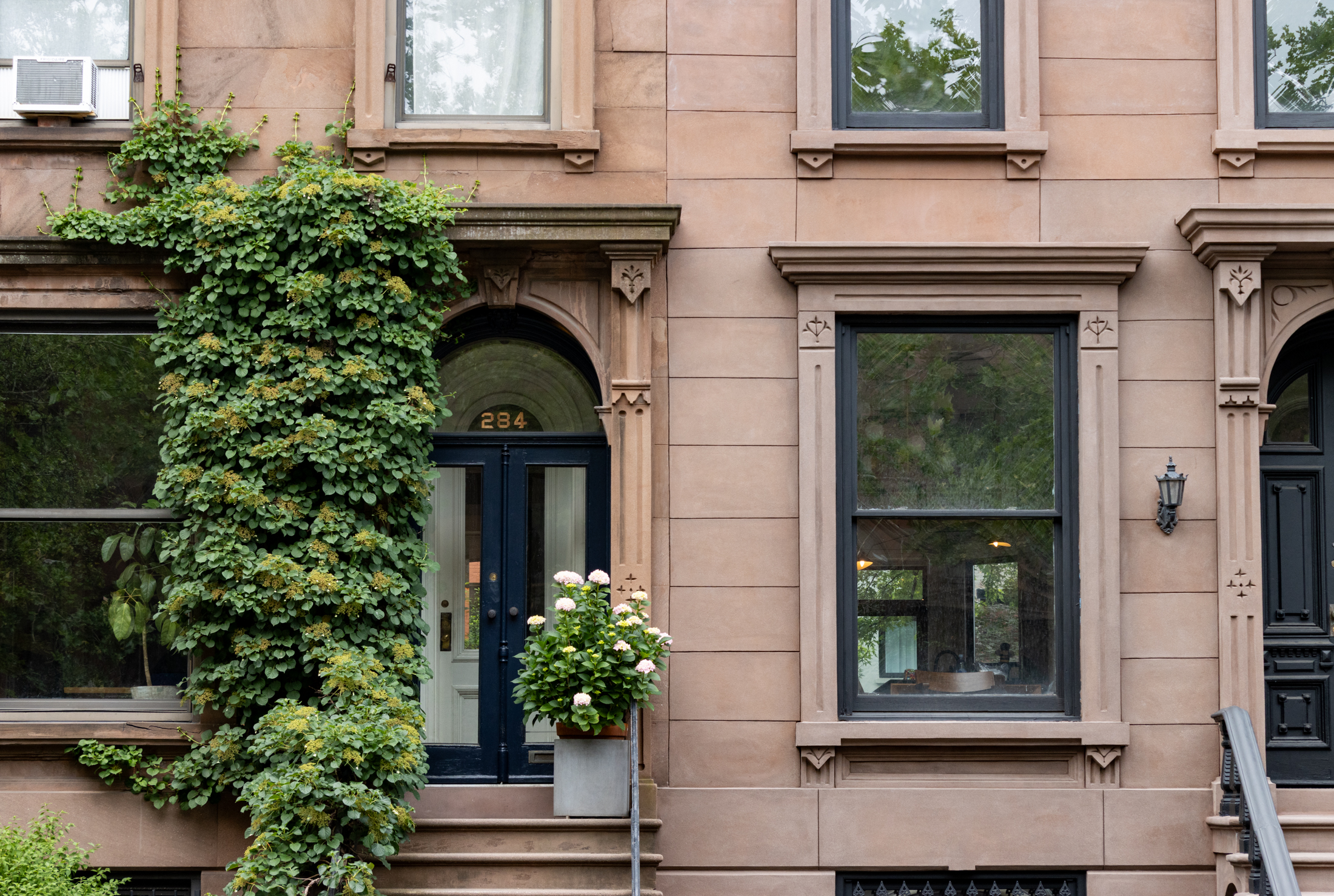
beautiful. love the backsplash and everything else.